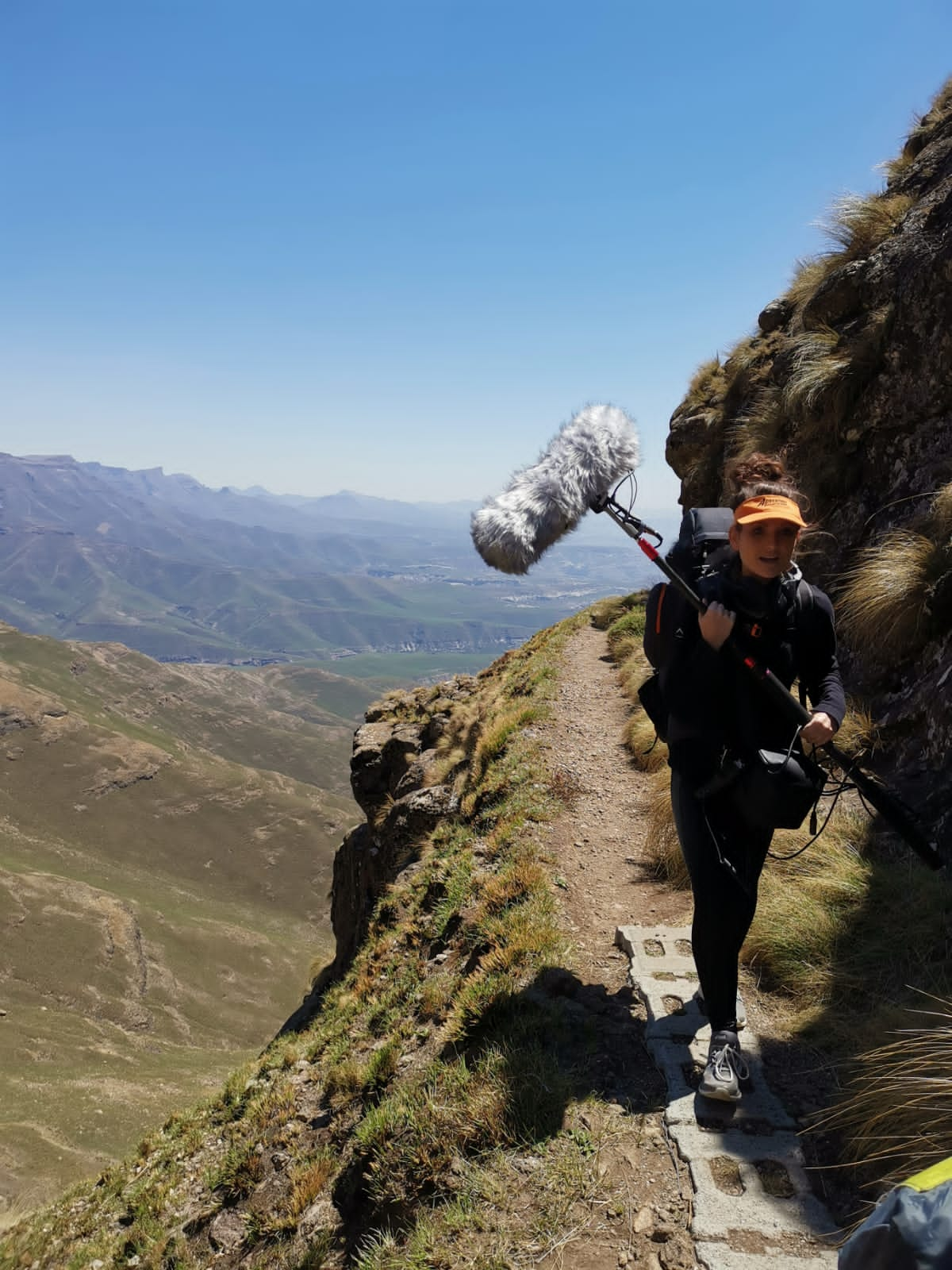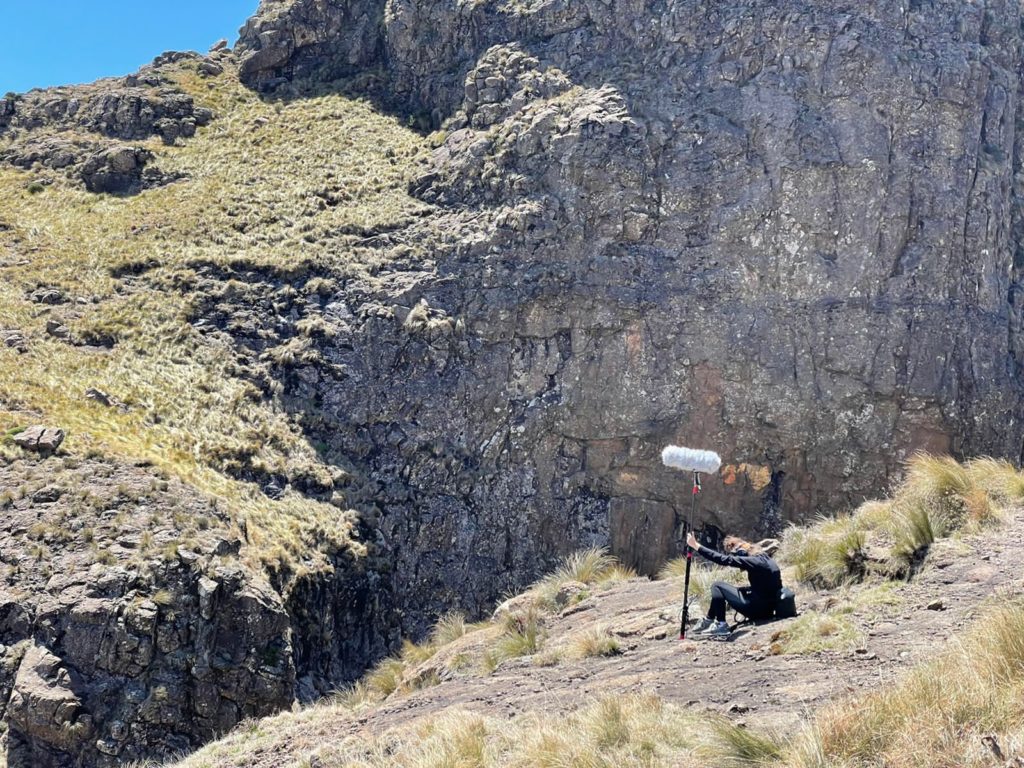
Some Tips From My Last Location Sound Gig
TUGELA SKYE
I have this weird love-hate relationship with location sound. It’s still a relatively new area of expertise for me, but there have been some amazing, and not-so-amazing experiences. I recently went on a trip with a well-known film producer, Timothy Hay from Hellmot productions. It was a last-minute adventure, and I must admit one of the coolest experiences I have ever had. So, I thought I would tell you a bit about the trip, what I learnt and what I might do differently next time.
So, the gig was as follows: Tim was the winner of the My Rode Reel competition the previous year and this year he decided to go all out for his second entry. I was contacted by a friend of a friend of a friend (because we all know that’s the only way to get work in this industry haha!), who asked me if I was free to do a gig in about two weeks.
We were going to hike up to Tugela Falls (the highest waterfall in the world), stay overnight, and capture some truly beautiful footage. Would I be interested in going? My answer was a simple “HELL YES!”
So, I got acquainted with the gear, the nature of the job, and what was required of me and took off on the adventure of a lifetime.
Here are the things I faced, and tips on what you might need to consider for your next location sound excursion:
When doing a location sound recording gig that’s going to be in the middle of the mountains, make sure you take the right camping gear!
I found myself having to share a one-man tent with another girl, we froze through the night and I totally forgot to bring simple things like a coffee cup. Yes, we had to be very careful as to how much weight we were carrying up the mountain (it was hellishly steep), but things like correct hiking boots would have saved my feet a few weeks of blister recovery.
No matter WHAT the film producer says, make sure you take extra cables!
This was a funny one – when working with videographers, or anyone else for that matter, and you haven’t had a chance to check the quality of the cables beforehand, just bring your own in case. We had a faulty cable running into our Zoom recorder and it meant we couldn’t use all the mics we had hoped to use for the film. This made room for error as we were relying on a limited feed for our takes. If something went wrong, we didn’t have backup feeds. So, just tuck them in a pocket if you must but take extra cables with you!
Make sure you are familiar with the gear.
I knew what I was doing but had never used the model that was provided. So, before the gig, I spent some time on YouTube simply making sure I had a good idea of simple things, like where the menu button on the recorder was. Trust me, you don’t want to look like an idiot when you go ask the DOP where to find the menu button on a piece of gear you should be proficient at.
Take as much wind protection as possible.
I’ve never experienced as much wind as I did at the top of that mountain, if it hadn’t been for the wind protection we brought with us, everything would have been ruined. Even if you don’t think it will be windy, take it with you.
Don’t be afraid to tell the DOP that it was a dud take.
The worst thing happened – we were taking a shot for the climax of the film. After a few takes and struggles, we got the take.
Everyone cheered.
I said, “Guys, we have to do it again.”
When they asked me if I was sure, I hesitated. For a moment I was embarrassed that I was the one killing the buzz after that amazing take, but I knew professionally that I needed to do my job, and I needed to do it well. I, very assertively said, “I’m sorry but you’re going to have to do it again, we can’t fix this in post.” And I am so glad I did.
Take in the view
We walked with 20-30kg bags on our backs, shooting in between scaling up cliff faces, and you know what – every time I got a chance, I looked around me and took it in. I was in awe. I couldn’t believe how magnificent the view was, and that I could justify this as “work”. The people, the place, the purpose – all exceeded expectations.
Be realistic with your post-production limitations.
So, because it was all done about a week before we had to submit the film, we had about 3 days to do all the audio post-production editing. I spent those three days doing nothing else. I had to know when to say, “this is the best we can do for this part.” But I also had to not be afraid to say, “I don’t think this will work here”.
Do push-ups.
You may laugh but carrying a boom mic for two days straight can take its toll. Make sure you get your upper body in good condition if you don’t want weeks of residual backache.
After about a week of filming and editing, we did it! And the feeling was SO good. I couldn’t put into enough words how much I enjoyed the experience – the early 4 am starts, the relationships and banter, the late nights editing, and the lasting connections made.
So, next time you go on an exploration-style sound recording gig, keep in mind these things, and good luck with your adventure!
